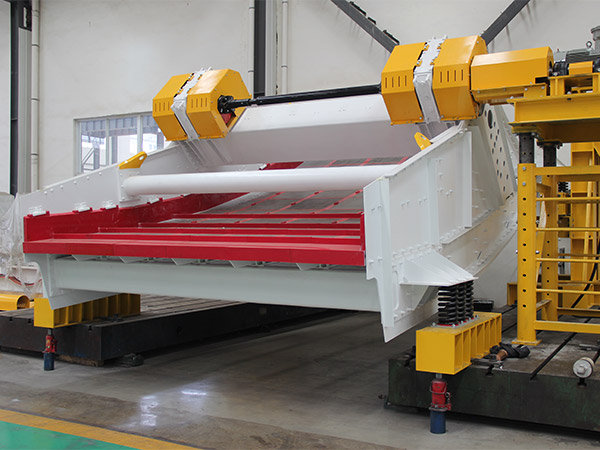Vibrating Screen Guide: Definition, Types, Working Principle, Price, Applications and Choose
A vibrating screen, also known as a separator or sifter, is a machine that is used to separate particles or materials into different sizes based on their particle size or shape. Here is a guide covering the definition, types, working principle, price considerations, and applications of vibrating screens.
Vibrating Screen Introduction
vibrating screen working principle
How to choose vibrating screen
Vibrating Screens Definition
A vibrating screen is a machine used to separate materials into various sizes based on their particle size or shape. It utilizes vibration to facilitate the separation of particles, typically consisting of a screen with mesh or perforated surfaces.
Types of Vibrating Screens

Linear Vibrating Screen
Uses linear motion for particle separation, commonly used for fine particle sizing.
Circular Vibrating Screen
Employs circular motion, suitable for both wet and dry applications, widely used in bulk material classification.
Elliptical Vibrating Screen
Combines advantages of linear and circular motion, providing high screening efficiency.
High-Frequency Vibrating Screen
Operates at higher frequencies for finer particle separation, often used in dewatering applications.
Inclined Vibrating Screen
Has an inclined or tilted screen surface, facilitating material movement and separation.
Banana Vibrating Screen
Features a banana-shaped screen surface, improving material retention and separation efficiency.
Dewatering Screens
Specifically designed for dewatering applications, removing excess moisture from screened material. For more information about vibrating screen models, please click to visit: What are the vibrating screen models?
Vibrating Screens Working Principle

The vibrating screen working principle involves the use of a vibrating motor or vibrator that imparts vibratory motion to the screen assembly. This motion causes particles to separate based on size, with smaller particles passing through the screen openings and larger particles remaining on the surface. Adjusting the amplitude and frequency of vibration allows control over particle separation.
Vibrating Screens Price
The price of a vibrating screen can vary depending on several factors such as the size of the screen, the type of screen, the materials used in its construction, and the manufacturer or supplier. In general, a basic vibrating screen for small-scale operations can cost anywhere from a few hundred to several thousand dollars.For details, please click to visit: How much is a vibrating screen
Vibrating screen price considerations
Several factors influence the price of vibrating screens:
Type and Size:
Different types and sizes of vibrating screens cater to varying applications, and prices may vary accordingly.
Capacity:
Higher-capacity screens designed for processing larger volumes of material may come with a higher price tag.
Features and Technology:
Advanced features, such as high-frequency operation, self-cleaning mechanisms, and automated controls, can affect the price.
Brand and Manufacturer:
Prices may differ among manufacturers and brands. Well-established brands or those offering specialized features may have higher prices.
Aftermarket vs. OEM:
Aftermarket screens may be more budget-friendly than original equipment manufacturer (OEM) parts. The choice depends on specific requirements and budget constraints.

Vibrating Screens Applications
Vibrating screens find applications in various industries:
Mining and Quarrying:
Screening and classifying minerals and aggregates.
Construction:
Sorting and separating construction materials, such as sand and gravel.
Recycling:
Sorting and classifying recycled materials like plastics, glass, and metals.
Food Processing:
Grading and separating food products in processing plants.
Chemical and Pharmaceutical:
Screening and separating chemicals and pharmaceutical products.
Aggregate and Sand Production:
Separating and grading materials in aggregate and sand production.
Dewatering:
Removing moisture from materials in dewatering applications.
Waste Management:
Sorting and classifying waste materials in recycling facilities.
Understanding the specific needs of the application and considering these factors will aid in selecting the appropriate vibrating screen for a given purpose.
How to choose vibrating screen
Through the above system introduction, we have a detailed understanding of the vibrating screen. As an important screening equipment, the vibrating screen’s screening effect will affect the use value of the product. Therefore, it is very important to choose the appropriate vibrating screen equipment. As a professional vibrating screen manufacturer, we believe that the selection should mainly consider the screening material, equipment structure, screening purpose and mineral processing requirements. For specific details, please visit:How to choose the right vibrating screen?
In summary, this is the complete introduction about vibrating screens. If you have any questions during use, you can consult us at any time. As a professional vibrating screen manufacturer, we will solve various problems for you and look forward to your consultation.



